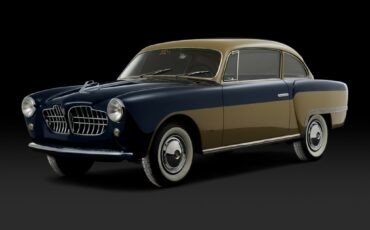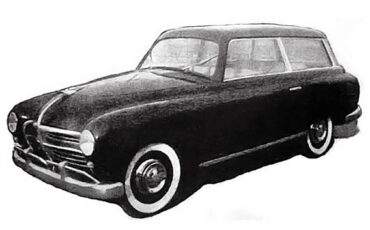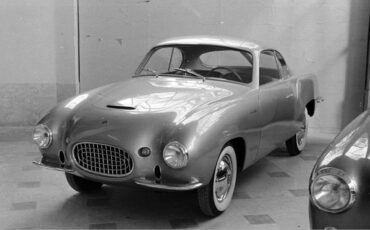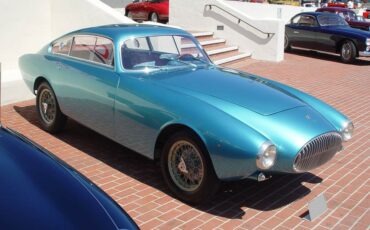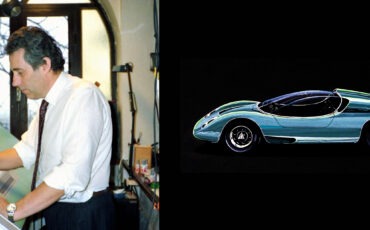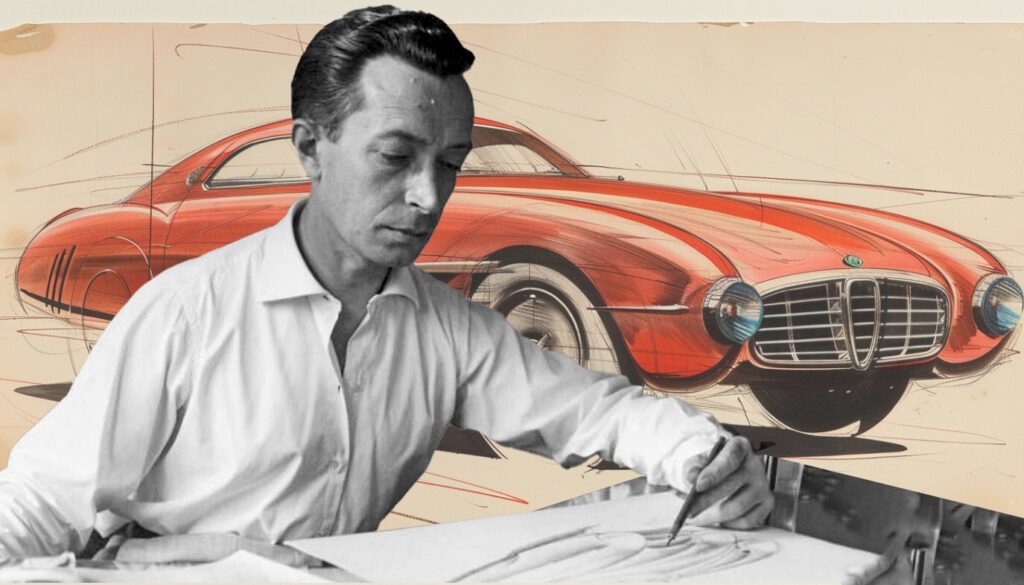
In the automotive design history, Franco Scaglione emerges as a pivotal figure, renowned for his influential work at Bertone. His distinctive touch, characterized by the iconic fins adorning the tail of automobile bodies, solidified his position as one of the industry’s most significant designers. This article delves into the impactful career of Franco Scaglione, highlighting his instrumental contributions to the world of automobile aesthetics
The early years
Franco Scaglione was born in Florence, born to Vittorio Scaglione, a distinguished army medic, and Giovanna Fabbri, a captain in the Italian Red Cross. Hailing from an affluent background with roots tracing back to the ancient nobility (Counts of Martirano), his early life took a turn at the tender age of six when he and his younger brother Eugenio became fatherless. His interests spanned reading, tennis, horseback riding, and rowing, while his initial foray into higher education delved into the humanities.
Subsequently, he enrolled in the Aeronautical Engineering faculty in Bologna, assuming the role of a second lieutenant in the Pontieri Engineers during his military service. As the Second World War erupted, Scaglione willingly joined the ranks, seeking assignment to the Guastatori Engineers. However, his journey took a different path when, on December 24, 1941, he found himself captured by British forces at El Duda, south of Tobruk. Interned at the Yol detention camp in India until the close of 1946, he returned to Italy on December 26 aboard the final prisoner transport ship.
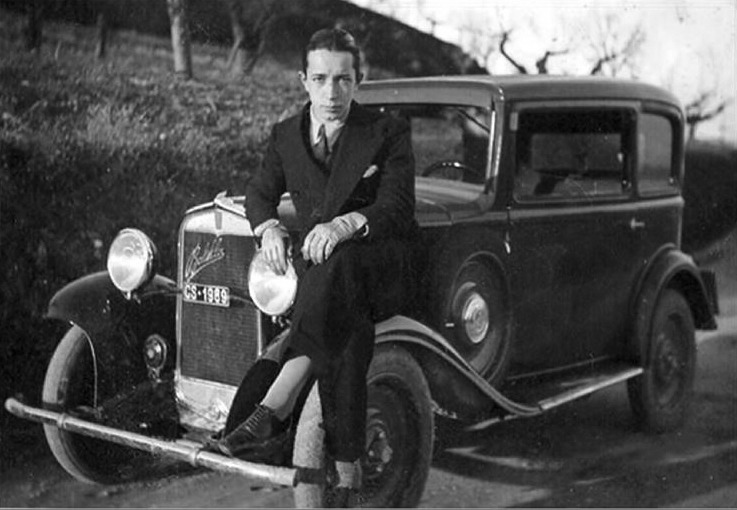
Reuniting with his mother in Carolei, near Cosenza, and mourning the loss of his brother Eugenio in the war, Scaglione devoted nearly a year to recovering from the prolonged captivity. Deeming it too late to resume his engineering studies and determined to capitalize on his drawing prowess, he ventured to Bologna in early 1947. There, he secured a position as a fashion designer with a prominent tailor. Simultaneously, he cultivated ties with local car manufacturers such as Ferrari and Stanguellini, showcasing his car design sketches as a testament to his skills.
On September 26, 1948, following a year-long engagement, Franco Scaglione married Maria Luisa Benvenuti, a Bolognese educator. The union bore fruit in 1950 with the arrival of their daughter, Giovanna.
The Genesis of Genius: Franco Scaglione's Early Years
Between 1949 and 1950, the period could be considered Franco Scaglione’s transitional phase as he sought employment in the automotive sector. In 1951, Scaglione relocated to Turin to explore opportunities in automotive design, a city much closer to the heart of the automotive industry. Initially, he and Luisa moved to Corso Matteotti 29, later to Via Osasco 2.
During this time, the Italian automotive industry was gaining new strength and momentum. Companies like Alfa Romeo and Fiat, among others, were building new factories on the ruins of the old ones destroyed by Allied bombings or within facilities previously dedicated to military production. While the early post-war cars were largely heavy, expensive, and outdated pre-war models, post-war economic development brought widespread prosperity, known as the “Economic Boom.” The production and sale of automobiles began to increase rapidly, gradually shifting towards the production and sale of small cars that most Italians could now afford to own, often by signing installment plans that were always honored.
In this rapidly evolving scenario, small coachbuilders began to multiply, producing small and medium-sized cars using the bare chassis provided by Alfa Romeo and Fiat, adorning them with fabulous creations but always in very limited quantities. During those times, ambitious car designers worked within their small “Carrozzerie” and tended to locate themselves in Piedmont, near the Fiat industrial complex in Turin. Once again, Franco Scaglione was trying to enter this rapidly growing world of automotive design by contacting various companies whose production he felt particularly compatible with. Few bothered to respond to his calls. Once again, as before, Battista Pinin Farina responded to Scaglione, albeit unable to offer him a job. It should be noted that Scaglione wanted to remain independent and not work “under the direction of…” as required by Pinin Farina. Furthermore, due to company policy, Pinin Farina did not allow the names of its designers to be associated with the company’s creations.
Instead, Nuccio Bertone offered Scaglione continuous employment, accepting the designer’s conditions, at least initially in their relationship, allowing Scaglione to work simultaneously for other clients, maintaining a small studio next to Carrozzeria Bertone’s headquarters. In 1951, Scaglione received a commission from Carrozzeria Balbo to create a Lancia Aurelia B53 Coupé and another assignment from Balbo for a Fiat 1400, meanwhile he created the Fiat 1100 Utiletta Frasca for the small Carrozzeria Ansaloni, a Fiat 1100 Coupé one-off for Carrozzeria Savio and a special Cisitalia 202B for Allemano.
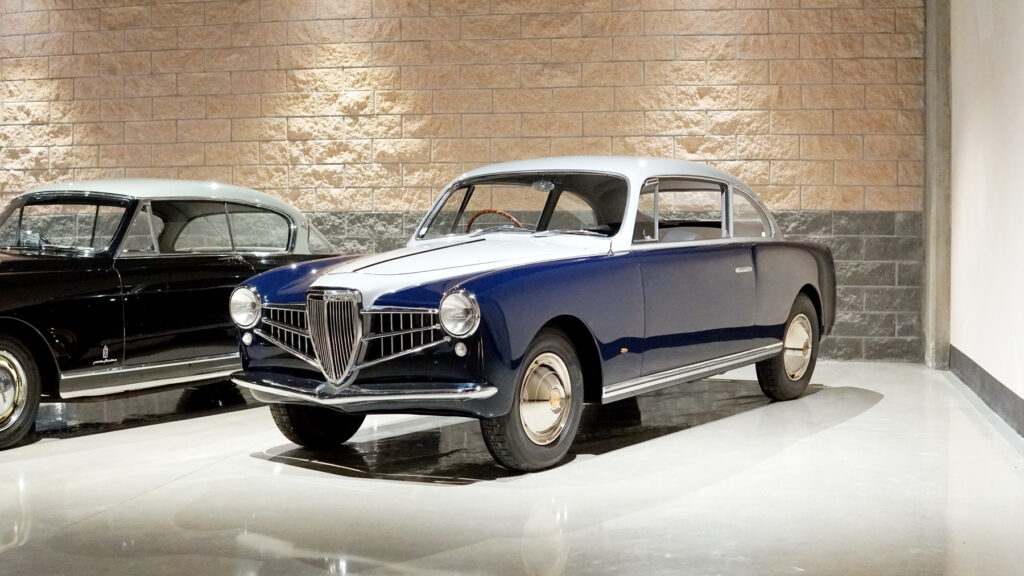
In this phase of his life, things were slowly beginning to bring him satisfaction both professionally and personally. Giovanna recalls, “We often went to Bologna during the weekends to meet my mother’s brothers. My father only had an old uncle (his father’s brother) who lived in Calabria, in Carolei, a small village 10 km from Cosenza; 1200 km from Turin. Every year, in September, my mother and I went to Carolei for about a month because we had our family home there. My father stayed in Turin because he couldn’t leave his job. Sometimes, in Turin, we would go out and meet friends, but since every family had young children, we would return home very early in the evening, before dinner; overall, a peaceful life typical of those times.”
The Artistic Alliance with Nuccio Bertone
Nuccio Bertone, a true admirer of Scaglione’s craftsmanship, had a tendency to grant Scaglione complete artistic freedom to shape his ideas and dreams. However, for Bertone, the entrepreneur, the primary objective was economic success through the production of a high volume of cars to amortize investments. Consequently, he often sought to guide the young designer’s work towards the creation of models geared for mass production.
The bond between Franco Scaglione and Nuccio Bertone was forged in the 1950s and proved to be enduring and mutually stimulating. For nine years, my father had the opportunity to experiment, refining his art and talent on numerous sports cars. If we examine the total number of cars designed by Scaglione throughout his career, it amounts to approximately 60 meticulously crafted vehicles.
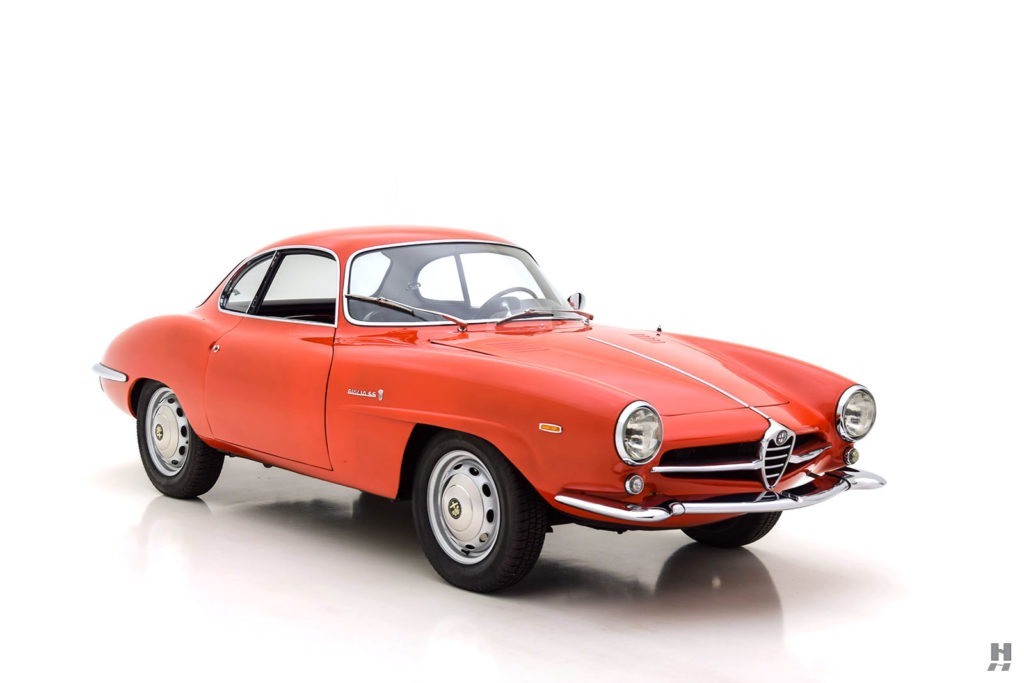
The Alfa Romeo Giulietta Sprint Speciale reached a production of 2,500 units, while both the Alfa Romeo Giulietta Sprint Coupé and the NSU Sport Prinz Coupé each generated over 20,000 units. This showcases how his works were consistently geared towards the pursuit of uncompromising stylistic perfection. This stood in contrast to other designers who aimed for stylistically less perfect cars but with a greater emphasis on the production aspect.
In this artistic alliance, Scaglione found a platform to express his creativity, while Bertone aimed for economic success. The collaboration became a testament to their shared journey, a journey marked by innovation, prolific output, and a pursuit of perfection in automotive design.
A Departure and New Horizons
During this period, Scaglione crafted additional models, some seldom seen, produced on the bespoke requests of affluent car enthusiasts. Eventually, his collaboration with Nuccio Bertone came to an end. Giovanna offers her perspective on the separation between Scaglione and Bertone in 1959.
His daughter Giovanna Scaglione reflects on the separation between her father and Bertone, stating that she doesn’t believe there were any additional factors contributing to their parting beyond what is already known. Both versions of the story are accurate. Bertone expressed irritation upon reading an article in specialized magazines that mentioned Scaglione’s name but not his (Autoitaliana in Italy or Retroviseur in France). However, her father didn’t take any actions to showcase himself or seek attention. In another article discussing one of Scaglione’s works, his name was mentioned three times while Bertone’s name was only mentioned once. Once again, Bertone was displeased, but Giovanna doubts this was a genuine cause of conflict.
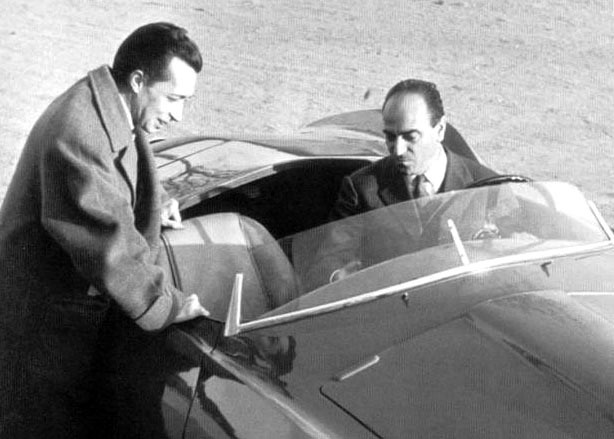
After spending nine years with Bertone, her father expressed the desire to open his own studio, with his initial client being a Japanese company. Consequently, the collaboration with Bertone came to an end. Bertone hired Giorgetto Giugiaro from Carrozzeria Ghia to rejuvenate the design department, assuming full leadership of this sector within his company. Giovanna notes that her father and Bertone never collaborated again; they occasionally encountered each other at automotive events throughout Europe, where they exchanged opinions and comments.
This marked a pivotal moment as Franco Scaglione embarked on a new chapter, charting his own course in the world of automotive design.
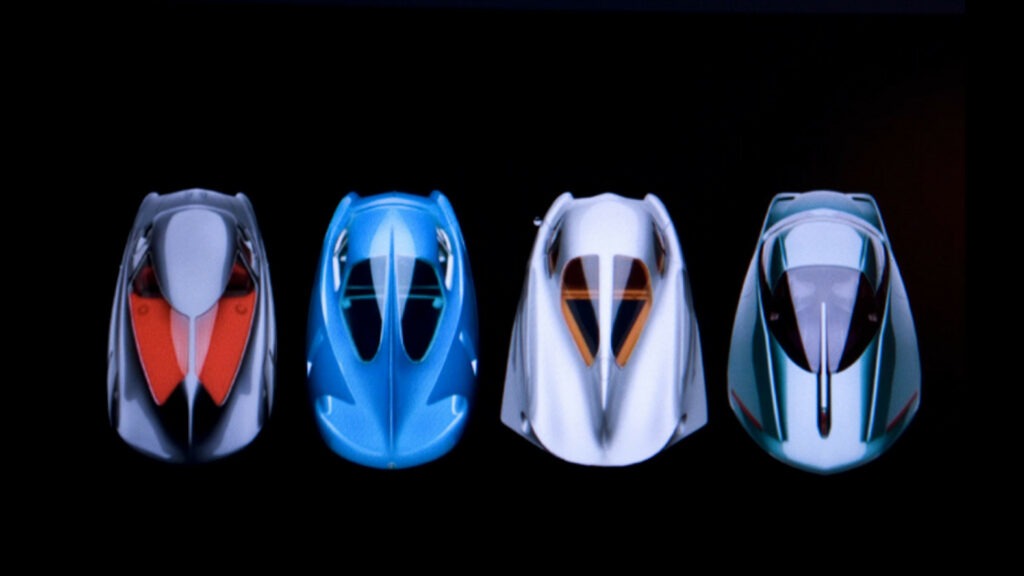
Giovanna, having been a very young child when the BAT series cars were designed by her father, recounts a story from her childhood: The BAT series comprised vehicles meticulously crafted for aerodynamic studies rather than mass production, a fact widely acknowledged. Despite their non-production intent, these cars were flawlessly engineered, exerting a profound influence on the trajectory of future automotive design. However, the European market at that time wasn’t prepared for automobiles with such a visually impactful presence.
The BAT 7 defied the conventional transport method by making its way to the Geneva Motor Show on its own wheels instead of being transported by a truck. The car’s completion coincided closely with the Geneva Motor Show, and the logistical constraints of truck transport threatened to miss the opening day of the show.
In response, Nuccio and Giovanna’s father embarked on the journey in the BAT, accompanied by a pair of mechanics in another vehicle loaded with spare wheels and essential parts for potential breakdowns. Unsurprisingly, an automobile adorned with ‘Test’ plates stirred the curiosity of numerous motorists. During fuel stops, the car became the focal point of inquisitive admirers, engaging in a flurry of questions.
With time constraints in mind, brief expressions of gratitude were exchanged, and they resumed their journey. Nuccio and Giovanna’s father reached Geneva seamlessly. After a hasty wash and polish, they promptly presented the car at the show stands, where it garnered the triumphant reception we are familiar with.
The Apex of Independence: Franco Scaglione's Impact Automotive Design
In the 1960s, Franco Scaglione reached the zenith of his career as an independent professional. While American automotive designers frequented auto shows in Turin, Geneva, London, and Paris from the early 1950s, absorbing the futuristic stylistic lines introduced by Scaglione, the Japanese took a more proactive approach, openly incorporating his design language.
When Scaglione agreed to design the Prince Motors Skyline Sprint 1900, showcased at the Tokyo Auto Show in 1960, the Japanese company sent one of its engineers, Mr. Takeshi Inoue, to Italy to understand Scaglione’s approach to a project. Takeshi spent an entire year in Italy, working alongside Scaglione in his workshop (at that time, Scaglione was no longer associated with Bertone). A strong friendship developed with Inoue, who became a frequent guest at their dinner table. While conversing with Scaglione, Inoue consistently spoke in English, but in the presence of Scaglione’s mother and daughter, he made an effort to communicate in Italian.
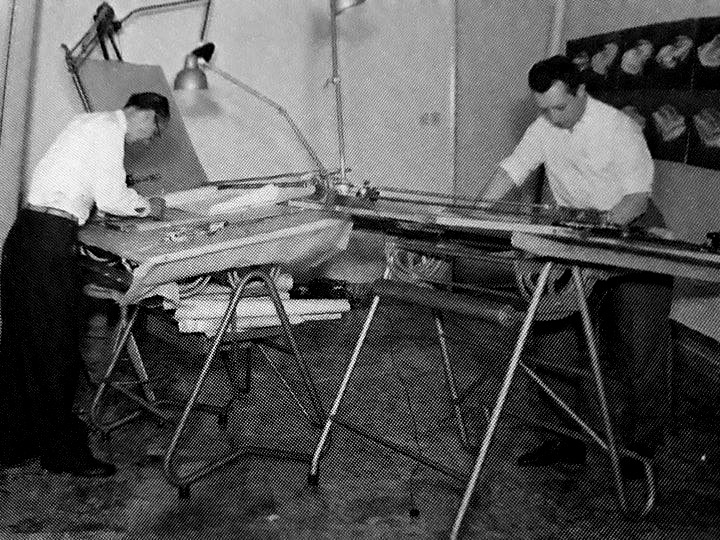
Upon the completion of the life-sized wooden model, constructed by the Raniero company in Orbassano, and its subsequent shipment to Japan, Mr. Inoue returned to Tokyo. The original drawings were dispatched by air directly to the company’s headquarters in Japan. Today, the Skyline Sprint 1900, a creation by Scaglione from 12 years prior, is housed at Nissan.
Throughout the remainder of his career, Franco Scaglione continued to operate independently, devoid of collaborators or apprentices. His willingness to offer guidance and support was notable, and his outgoing and cheerful personality endeared him to many, even as he shied away from the limelight. While some perceived him as arrogant, others, acknowledging his preference for modesty, considered him an introvert.
Efforts to locate Mr. Inoue, whose company Prince Motors was assimilated by Nissan of Japan, have proven fruitless. Scaglione’s pursuit of stylistic perfection, manifested in his studies on minimizing air friction and achieving the lowest coefficient of resistance, positioned him as a leading authority in aerodynamics, surpassing the accomplishments of his contemporaries. Scaglione earned his degree in aerodynamic engineering from the University of Florence in 1937, a unique background in the automotive design realm during the 1950s and early 1960s.
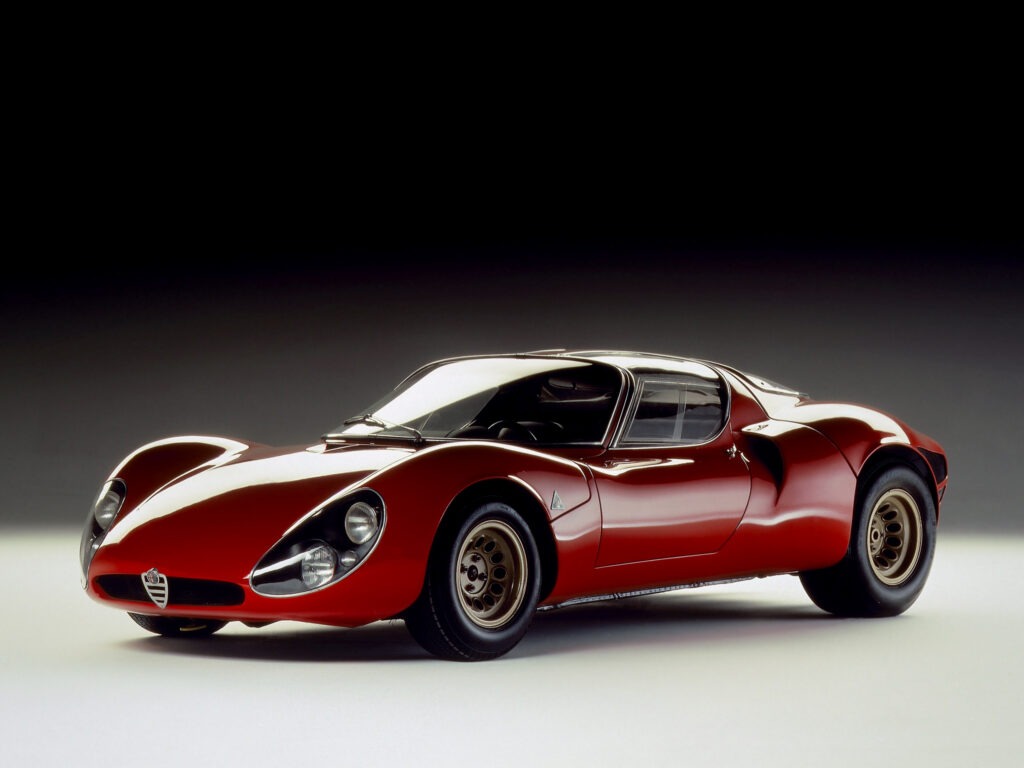
Following this experience, Franco Scaglione gave birth to a series of iconic automotive creations, including the Lamborghini 350 GTV, the ATS 2500 GT, the Titania, and various models for Intermeccanica such as the Apollo, Torino, Italia, Indra, LMX, and Murena. In 1967, he designed the Alfa Romeo 33 Stradale, celebrated by experts and enthusiasts alike as one of the most aesthetically pleasing sports cars ever designed. The innovative body, conceptualized by Franco Scaglione and crafted by Carrozzeria Marazzi, featured the pioneering “butterfly” doors that ascend halfway up the roof before gracefully opening diagonally forward. Autodelta, Alfa Romeo’s racing department, was responsible for producing the complete chassis, including the engine and transmission, situated alongside the Tipo 33 competition cars. Following the financial setback of Intermeccanica’s bankruptcy, orchestrated by Canadian entrepreneur Frank Reisner, and the subsequent loss of a substantial portion of his savings, Scaglione withdrew from his professional pursuits due to the profound disappointment he experienced.
Legacy in Motion: Franco Scaglione's Lasting Influence
After a series of attempts to establish his own design firm in the early 1980s and a failed bus project with FIAT, Franco Scaglione retired to Suvereto. He passed away in 1993, nearly forgotten, succumbing to lung cancer.
Franco Scaglione’s journey through the world of automotive design stands as a testament to his unwavering commitment to artistic innovation and aerodynamic excellence. From his formative years in Florence to collaborations with renowned brands and the creation of iconic designs, Scaglione’s imprint on the industry is profound.
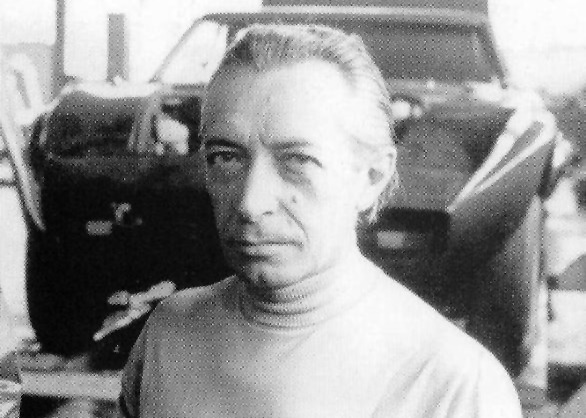
His legacy extends beyond geographical borders, influencing not only Italian and German automakers but also leaving an indelible mark in Japan with the Prince Motors project. Despite facing challenges in the latter part of his career, Scaglione’s resilience and creative spirit remained intact.
In Suvereto, where he spent his final years, the echoes of Scaglione’s genius persist, reminding us of the visionary who dared to reshape the contours of automotive design. While he may have passed away in relative obscurity, his impact continues to reverberate through the sleek lines and timeless designs of the cars that bear his signature, ensuring that Franco Scaglione remains an enduring icon in the history of automotive innovation.

